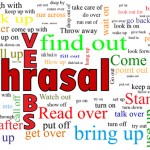In the English language, most of the verbs are ‘regular verbs’. However, it has a considerable number of irregular verbs as well. Therefore, English learners should know or must familiarise with regular and irregular verbs equally well, lest they have to face problems when they need to write grammatical English sentences or even when they speak formal English. They can recognize ‘regular verbs’ easily by looking at how they become past and past participle. Regular verbs take only ‘-ed’ at the end of both past and past participle forms. However, some regular verbs need an additional letter of their ending letter before adding ‘-ed’ at the end in their participle form.
Let us look at the way some English verbs become past and past participle to understand the concept. The verb ‘delete’ past and past participle form is ‘deleted’. So are the verbs ‘cultivate’ and ‘dance’. It is the way most of the English verbs take its next two forms. But many other English verbs take different appearance when they become past and past participle. For example, ‘run’ become ‘ran’ in its ‘past’ before it begins again ‘run’ in the past participle. But ‘read’ is stoic in all three form but its pronunciation changes. These verbs are called ‘irregular verbs.’
Irregular English Verbs take a different form in its past and past participle. Irregular verbs such as ‘put’ do not change. So are the ‘cut’ and ‘hit’. But ‘write’ becomes ‘wrote’ and then ‘written’ in its participle. ‘Meet’ becomes ‘met’ and then again ‘met.’ ‘Come’ becomes ‘came’ in its past and turned back to ‘come’ in its participle. The verb ‘swim’ becomes ‘swam’ and then ‘swum’. ‘Bring’ becomes ‘brought’ and keep the same form in past participle. ‘Be’ turns to ‘was’ and then ‘been’. Therefore, English students should pay more attention to irregular verbs when they read written articles so as to familiarise with their past and past participle forms.
One easy way to recognise and familiarise with these irregular forms is to follow a dictionary. In most of the dictionaries, the forms in these two steps are given separately in front of each verb. However, the dictionary does not provide the participle form of a verb if it does not have that particular form. Therefore, English learners can easily understand that the verbs without its past and participle forms in the dictionary are regular verbs. In this way, they can recognize and use irregular verbs without any trouble.
One more instance that students must be careful is the verb that has an additional letter before their next form. For example, the verb ‘plan’ should take extra ‘n’ before turning to its past tense. Its past tense is ‘planned’ and so is the past participle. However, irregular verbs are not that many in English verbs when compared to the number of them with the number of regular verbs. Only about 250 irregular verbs are in the English language. However, without knowing them, one cannot be an expert in English language usage. Avid readers can make friends with not only regular verbs but irregular verb usage within months.









